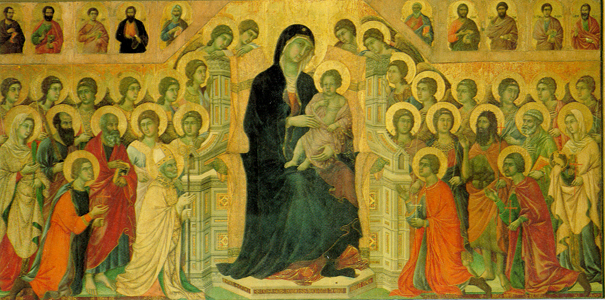By comparison with most artists of the thirteenth and fourteenth centuries, who are shadowy, ill-defined figures, often anonymous or known only by the dominant characteristics of their style (The Master of the Squiffy-Eyed Virgins, and such like) Duccio di Buoninsegna is something of a character: a man with form as long as your arm; a recalcitrant, distinctly unpatriotic and rather disorganised fellow, resistant to authority and beset, as the self-employed so often are, by persistent cash-flow problems.
Duccio was one of the most prodigiously gifted artists of the early Renaissance but he does not seem to have been especially well behaved. The archives of his home town, Siena, have yielded an abundance of references to his vivid and evidently somewhat unruly life. He was fined heavily in 1289 for refusing to swear allegiance to the commander of the local militia, and again in 1302, when he declined to take part in the wars against the neighbouring city state of Florence. He was penalised on innumerable other occasions for non-payment of his debts.
In the eyes of his Sienese contemporaries Duccio expiated all of his sins, major and minor alike, when he finished his altarpiece of The Virgin Enthroned in Majesty (the Maesta, as it is known for short) for the high altar of the city’s great black-and-white striped Cathedral. He was in his mid- to late-fifties at the time and the work - the equivalent of an entire fresco cycle executed in the form of a polyptych, it must be counted the single greatest Italian altarpiece - had cost him many years of labour. The city greeted its completion with a kind of spontaneous street festival. According to a contemporary witness, “The Bishop ordered a great and devout company of priests and brothers with a solemn procession, accompanied by...

Duccio’s Maesta
30-11-1999

